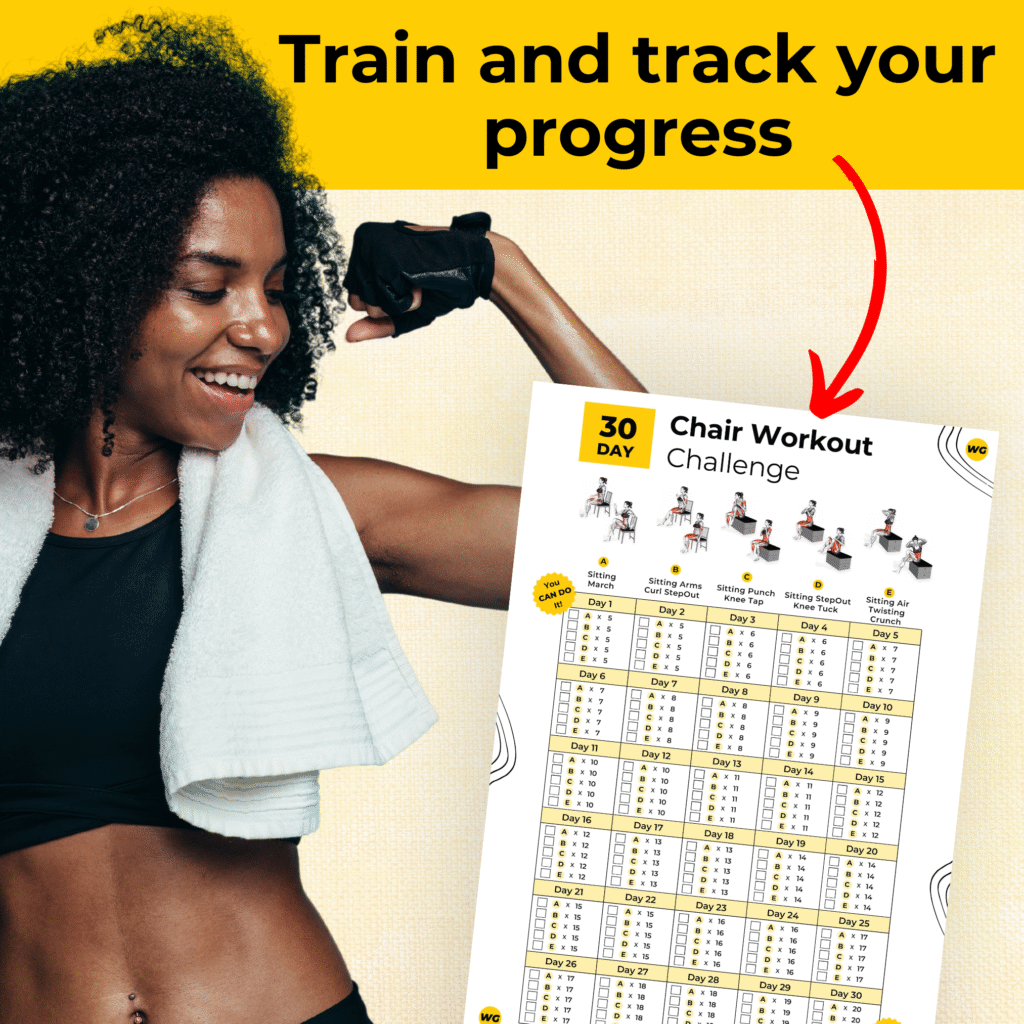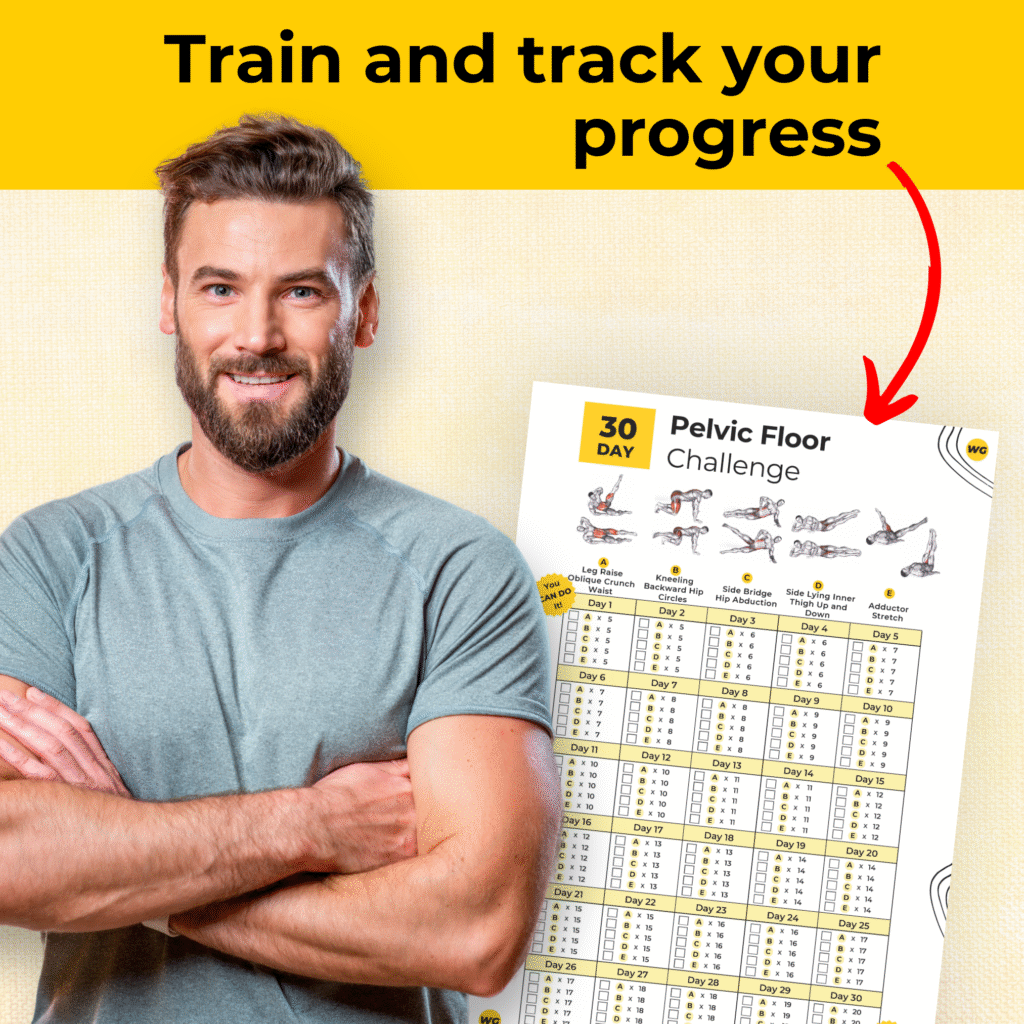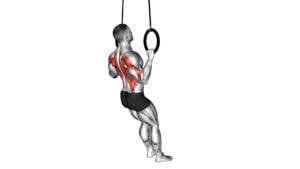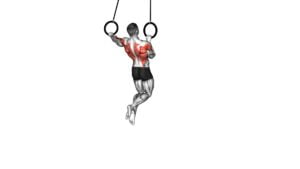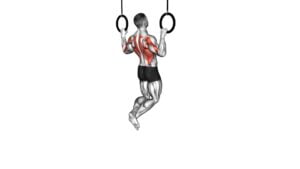Ring Pull-up – Video Exercise Guide & Tips
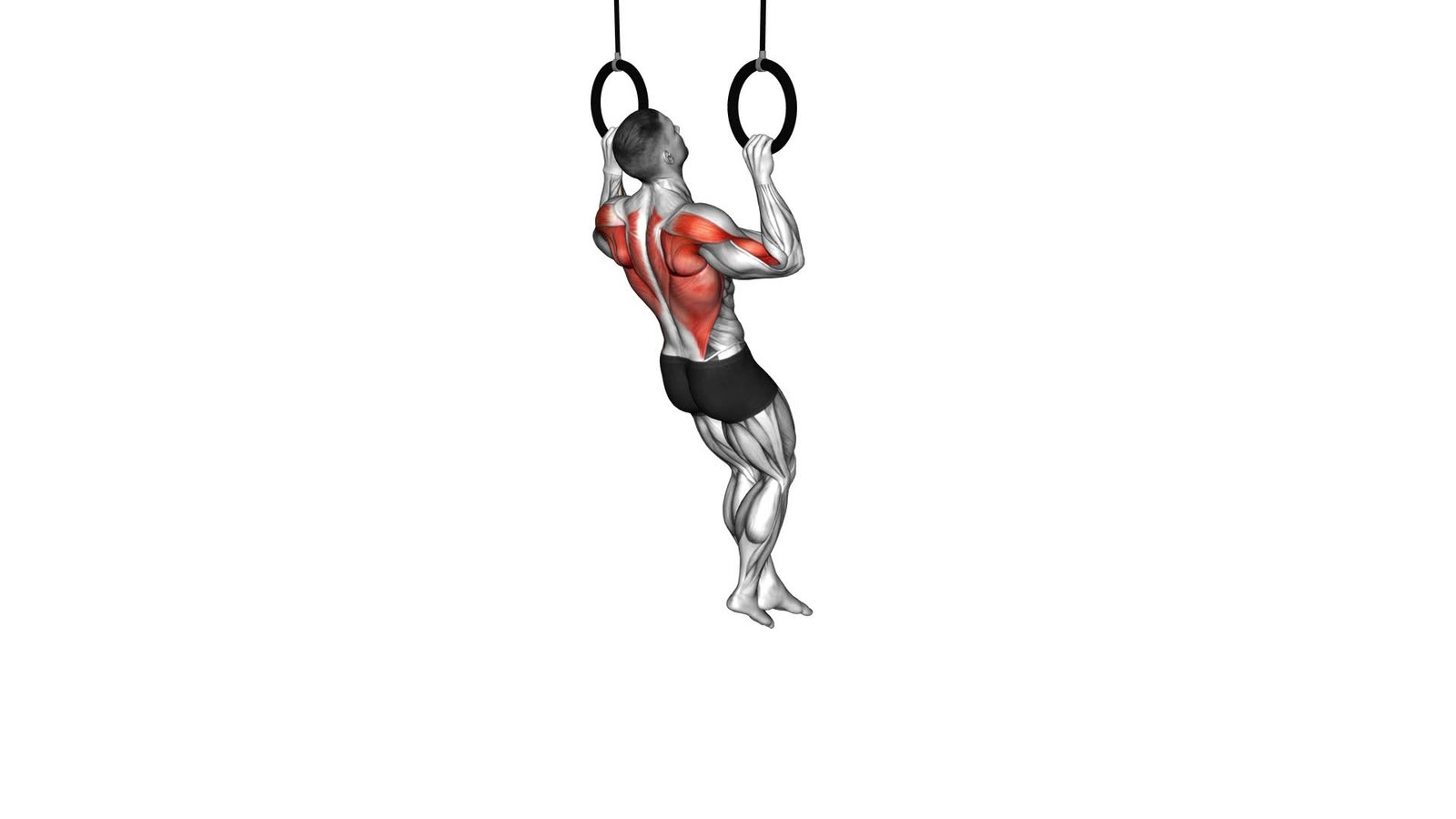
Are you looking to build upper body strength and improve your pull-up game? Look no further than the ring pull-up!
Watch This Exercise Video
In this video exercise guide, we'll show you how to properly set up the rings and demonstrate the correct form and technique. We'll also provide variations and progressions to challenge yourself as you get stronger.
Say goodbye to common mistakes and hello to a more effective workout.
Let's get started!
Key Takeaways
- Ring pull-ups improve upper body strength and muscle development.
- They engage core muscles and increase muscle activation.
- Ring pull-ups help improve grip strength.
- They build functional strength for everyday activities.
Benefits of Ring Pull-Ups
You can experience improved upper body strength and muscle development by incorporating ring pull-ups into your workout routine. Ring pull-ups are a challenging exercise that targets multiple muscle groups, leading to increased muscle activation. Unlike traditional pull-ups on a bar, ring pull-ups require additional stabilization, engaging your core muscles to maintain balance. This increased muscle activation helps to develop a strong and stable upper body.
One of the key benefits of ring pull-ups is the improvement in grip strength. The instability of the rings forces your grip to work harder to maintain control and stability throughout the exercise. This can lead to increased grip strength, which isn't only beneficial for pull-ups but also for other exercises that require a strong grip, such as deadlifts or kettlebell swings.
Incorporating ring pull-ups into your workout routine can also help to build functional strength. As you pull yourself up using the rings, you engage your back muscles, biceps, and shoulders, mimicking movements that are often used in everyday activities. This functional strength can translate into improved performance in sports or daily tasks that require upper body strength.
Now that you understand the benefits of ring pull-ups, let's move on to setting up the rings for your workout.
Setting Up the Rings
How can the rings be set up for the ring pull-up exercise? Setting up the rings properly is crucial to ensure a safe and effective workout.
First, find a sturdy overhead structure, such as a pull-up bar or secure beam, to attach the rings to. Make sure the structure can support your body weight and the additional stress of the exercise.
Next, attach the rings to the structure using reliable ring attachments. These attachments should be securely fastened and able to bear your weight without any risk of slipping or breaking. It's essential to check the attachments and the rings themselves for any signs of wear or damage before each use. Safety precautions should always be taken seriously to prevent accidents or injuries.
Once the rings are securely attached, you're ready to move on to the next step: proper form and technique.
Transition: Now that the rings are set up correctly, it's time to focus on maintaining proper form and technique during the ring pull-up exercise.
Proper Form and Technique
To perform the ring pull-up exercise with proper form and technique, it's important to focus on maintaining a strong and stable body position throughout the movement. This means keeping your core engaged, your shoulders down and back, and your legs straight and together.
A common mistake is allowing your body to swing or sway during the exercise, which can compromise your form and reduce the effectiveness of the movement. To avoid this, make sure to control the motion and keep your body still.
Another important aspect of proper technique is to fully extend your arms at the bottom of the movement, and then pull yourself up until your chin is above the rings. Avoid using momentum or jerking motions to complete the exercise, as this can increase the risk of injury.
Instead, focus on using your back and arm muscles to initiate and control the movement. By following these guidelines, you can ensure that you're performing the ring pull-up exercise with proper form and technique, maximizing its benefits and minimizing the risk of injury.
Variations and Progressions
After focusing on proper form and technique, it's important to explore variations and progressions of the ring pull-up exercise to continue challenging your muscles and making progress in your training. There are several advanced techniques and strengthening exercises that you can incorporate to take your ring pull-ups to the next level.
One variation you can try is the Archer Pull-up. This exercise involves pulling yourself up to one side while keeping the opposite arm fully extended. This not only increases the difficulty of the exercise but also targets the muscles in your back and shoulders in a different way.
Another variation is the L-sit Pull-up. In this exercise, you lift your legs up and hold them parallel to the ground while performing the pull-up. This adds an extra challenge to your core muscles and increases the overall intensity of the exercise.
To further progress, you can also try weighted pull-ups. By attaching a weight to your body using a weight belt or a weighted vest, you increase the resistance and force your muscles to work harder. Start with a manageable weight and gradually increase it over time.
Common Mistakes to Avoid
To maximize the effectiveness of your ring pull-up exercise, it's crucial to be aware of and avoid common mistakes. By understanding and practicing proper technique, you can prevent injury and achieve optimal results.
One common mistake is using too much momentum. It may be tempting to swing your body or use a kipping motion to generate momentum, but this takes away from the targeted muscle engagement. Instead, focus on controlled movements, using your back and arm muscles to pull yourself up.
Another mistake to avoid is neglecting your grip. Your grip strength plays a significant role in performing ring pull-ups effectively. Make sure to maintain a firm grip on the rings throughout the exercise, as this will help stabilize your body and engage your muscles properly.
Improper body positioning is another common mistake. Avoid arching your back or hunching your shoulders during the exercise. Instead, keep your body straight and engage your core muscles to maintain stability.
Lastly, rushing through the exercise is a mistake that many people make. Take your time and perform each rep with control and precision. This won't only maximize the benefits but also reduce the risk of injury.
Frequently Asked Questions
What Are the Recommended Ring Pull-Up Exercises for Beginners?
When starting out with ring pull-ups, it's important to focus on progressions that gradually increase difficulty.
Begin with assisted ring pull-ups using a resistance band.
As you gain strength, move on to negative ring pull-ups, slowly lowering yourself down from the top position.
A common mistake is using too much momentum and not engaging your back muscles properly.
Remember to maintain proper form and control throughout the exercise to maximize results.
How Long Does It Take to See Results From Ring Pull-Ups?
When it comes to seeing results from ring pull-ups, the timeline can vary. It depends on factors like your current fitness level and how often you're doing the exercise. Generally, with consistent practice and proper form, you can start noticing improvements in your upper body strength within a few weeks.
Ring pull-ups are great for targeting multiple muscles in your upper body, including your back, arms, and shoulders. So keep at it, and you'll see progress in no time.
Is It Necessary to Use Chalk While Performing Ring Pull-Ups?
Using chalk while performing ring pull-ups is a personal choice. It can provide a better grip and reduce the risk of slipping, especially if your hands tend to get sweaty. However, there are pros and cons to consider.
Chalk can be messy and may cause dryness or irritation. If you prefer alternatives, you can try using grip pads or gloves to improve your grip. Experiment and find what works best for you.
Are Ring Pull-Ups Suitable for Individuals With Shoulder Injuries?
Ring pull-ups can be a suitable exercise for individuals with shoulder injuries. They offer modifications that can be done to accommodate different levels of shoulder mobility and strength. If you have a shoulder injury, you can try using a neutral grip or using resistance bands to assist with the movement.
Ring pull-ups can also be beneficial for shoulder rehabilitation as they engage the muscles around the shoulder joint and promote stability and strength.
Can Ring Pull-Ups Help Improve Grip Strength?
Ring pull-ups can definitely help improve your grip strength. By using rings instead of a traditional pull-up bar, you engage more muscles in your hands and forearms, leading to increased grip strength.
Incorporating ring pull-ups into your workout routine has many benefits, such as building upper body strength and improving core stability. To progress and challenge yourself, you can try adding weight, increasing the range of motion, or performing more reps.
Keep pushing yourself to see the improvements in your grip strength.
Conclusion
In conclusion, ring pull-ups are a highly effective exercise that offer numerous benefits, such as building upper body strength and improving stability. By properly setting up the rings and using correct form and technique, you can maximize the effectiveness of this exercise.
Additionally, there are various variations and progressions available to challenge yourself and continue progressing. Avoiding common mistakes will help you perform ring pull-ups safely and efficiently.
Start incorporating ring pull-ups into your workout routine for a challenging and rewarding upper body exercise.

Author
Years ago, the spark of my life’s passion ignited in my mind the moment I stepped into the local gym for the first time. The inaugural bead of perspiration, the initial endeavor, the very first surge of endorphins, and a sense of pride that washed over me post-workout marked the beginning of my deep-seated interest in strength sports, fitness, and sports nutrition. This very curiosity blossomed rapidly into a profound fascination, propelling me to earn a Master’s degree in Physical Education from the Academy of Physical Education in Krakow, followed by a Sports Manager diploma from the Jagiellonian University. My journey of growth led me to gain more specialized qualifications, such as being a certified personal trainer with a focus on sports dietetics, a lifeguard, and an instructor for wellness and corrective gymnastics. Theoretical knowledge paired seamlessly with practical experience, reinforcing my belief that the transformation of individuals under my guidance was also a reflection of my personal growth. This belief holds true even today. Each day, I strive to push the boundaries and explore new realms. These realms gently elevate me to greater heights. The unique combination of passion for my field and the continuous quest for growth fuels my drive to break new ground.



